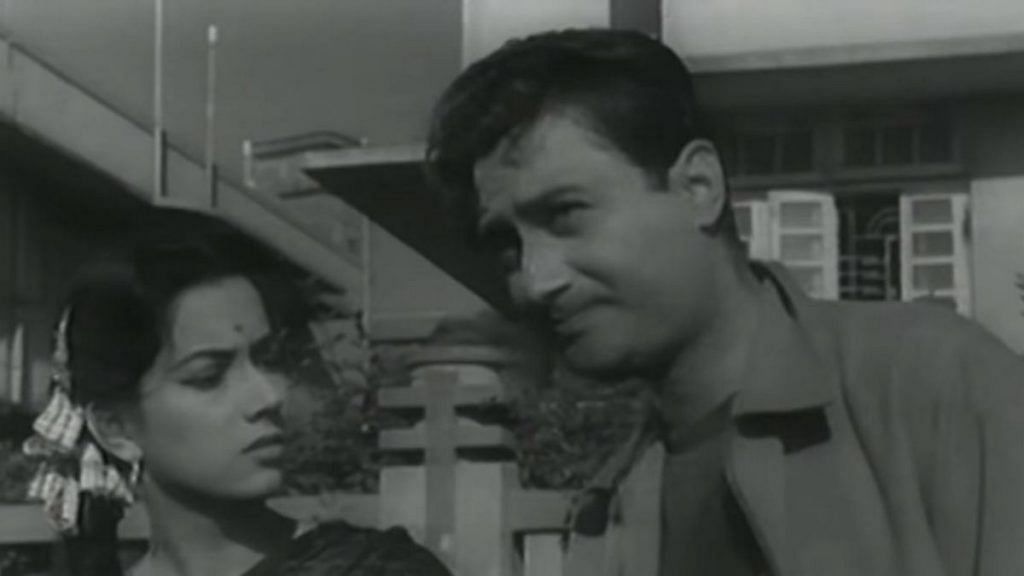Ask anyone born after 1980 and they’ll tell you — if at all they’ve heard of C.I.D. — that the one thing about the movie that has immediate recall is the song Yeh Hai Bombay Meri Jaan. And, in a way, it makes sense.
Featuring Johnny Walker and Kum Kum, the iconic song is an ode to the city of dreams, yes, but not a loving, starry-eyed one. It is a ruefully affectionate, jaded look at Bombay’s (now Mumbai) relentless pace, its crowds of humanity all looking to get ahead no matter whose toes they step on along the way. “Khud kaate gale sabke kahe isko business” (People here will slit your throat and call it business) — the city’s avowed professional ethic is ripped apart in this class act in black humour.
In the movie, the song seems to be meant to provide comic relief from the actual plot (it’s a crime thriller after all), but actually, it’s a cleverly placed metaphor for everything the film is about — corruption, greed, crime, class divides, the speed at which a city is racing to be and stay modern. And in tone and style, it is an encapsulation of the film.
Also read: Johnny Walker, India’s favourite ‘drunk’ comedian who was a teetotaller
The movie opens with a series of phone calls to plot the murder of Shrivastav, the editor of Bombay Times, right before he was set to expose the corruption of Dharamdas, a wealthy and well-known man. He is given one final warning, but refuses to back down.
He calls his old acquaintance, C.I.D. Inspector Shekhar (Dev Anand), as he knows he is in danger, but before Shekhar and his colleague can get there, Shrivastav is killed. Shekhar ‘borrows’ a young woman, Rekha’s (Shakila) car to chase the killer, but while the chase is unsuccessful, he does find love along the way. Rekha turns out to be the daughter of the police chief, Shekhar’s boss, and although she irritatingly thwarts Shekhar’s attempt to follow leads (twice), the two fall in love.
Meanwhile, the killer is caught and identified by Master, but Dharamdas’ associate Kamini (Waheeda Rehman in a stunning debut) drugs Shekhar and tells him to release the man — which Shekhar doesn’t do.
Kamini, it turns out, is Rekha’s childhood friend. What follows includes elements of classic crime thrillers: Dharamdas has his own man, the killer, killed in jail so he can frame Shekhar for it. Shekhar flees and reaches Dharamdas’ house where ensues a proper cat-and-mouse game, including false doors leading to secret passageways and dungeons. Eventually, Shekhar figures out a plan to catch Dharamdas red-handed.
What’s interesting is that in all this, the real villain of the piece is the wealthy Dharamdas who has friends in high places, including the police chief himself. Kamini is introduced as a negative character, but as the story plays out, you realise she has her own reasons for doing this, and she redeems herself. Master might have a police record, but the film makes it clear he is a good guy (particularly when Kamini and Dharamdas try to intimidate him into not appearing as a witness). Even the man who actually killed the truth-loving crusader Shrivastav is shown as a footsoldier of the real mastermind.
This kind of pro-working class sentiment was often seen in the Hindi cinema of the years immediately after independence. In fact, C.I.D. is not a traditional whodunit in that we know fairly early on who has done it. It is more an unravelling of the complex web of Indian socio-economic strata and the motivations that drive these strata.
Another striking aspect of the movie is its cinematography. V.K. Murthy and Anwar Pabani play with light and dark to great effect, especially in the suspense-filled game of hide-and-seek in the dungeons of Dharamdas’ house and the cops chasing Shekhar when he’s on the run. This, plus the moody background score, combine to give the hard-boiled crime thriller a tinge of noir.
In fact, special mention must be made of the film’s music. While the background tunes are appropriate for a thriller, the songs are an absolute delight even today. Apart from the two already mentioned, another winner is Leke Pehla Pehla Pyaar, which comes twice. The first, when Shekhar is pursuing Rekha, is a light-hearted version, but later, the same song beautifully shows Rekha’s tormented state when Shekhar, by now under suspicion, has asked her to leave him alone, for her own sake.
https://www.youtube.com/watch?v=CFVH3hf0p1A
But ultimately, the movie belongs, as we know, to Dev Anand. The master of the laconic owns every frame, whether as upstanding cop or teasing lover. This is a movie that is extremely urban, and Dev Anand is in his element as the suave crime-fighter. It’s not the first movie one thinks of when recalling his long, extensive career, but it is one that has aged well. Just like Dev Saab himself.
Also read: Dev Anand’s Prem Pujari spoke about patriotism like no other Bollywood film
